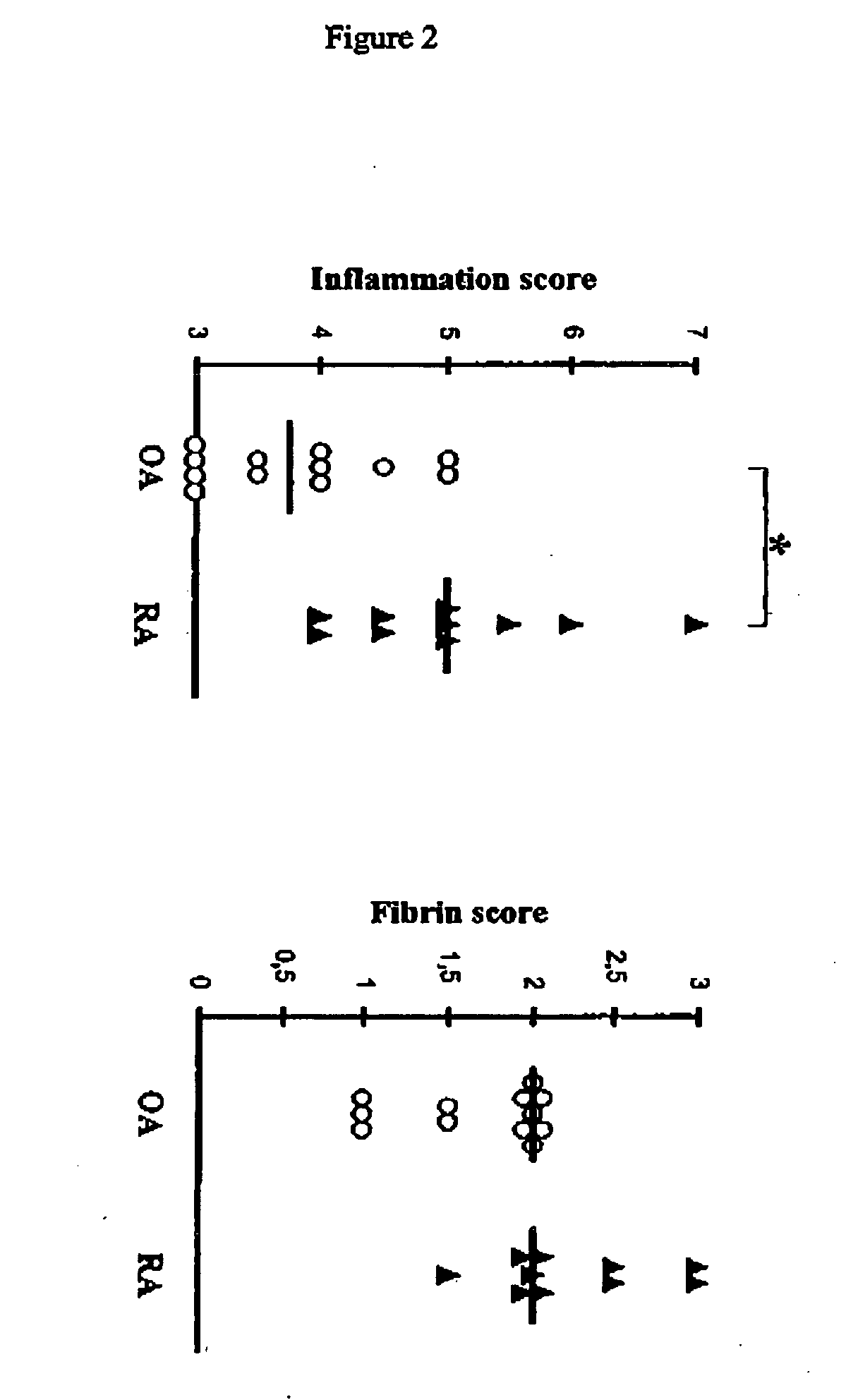Use of TF antagonists
a technology of tissue factor and antagonist, which is applied in the direction of antibody medical ingredients, instruments, peptide/protein ingredients, etc., can solve the problem of not being able to catalyze the conversion, and achieve the effect of reducing tf production and enhancing one or more physiological responses
- Summary
- Abstract
- Description
- Claims
- Application Information
AI Technical Summary
Benefits of technology
Problems solved by technology
Method used
Image
Examples
example 1
[0159] Human studies: Tissue sampling. Samples of synovial tissue from 12 patients with OA (6 women and 6 men mean±SD age, 74.6±11.7 years) and 10 patients with RA (7 women and 3 men, mean±SD age, 58.6±11.6 years) undergoing joint replacement surgery (knee or hip) were obtained from the Department of Orthopedics (Centre Hospitalier Universitaire Vaudois). OA was diagnosed according to clinical and radiologic criteria, and patients with RA fulfilled at least 4 of the 7 American College of Itheumatology (formerly, the American Rheumatism Association) revised criteria for the classification of RA (Arnett FC. et al. Arhritis Rheum. 31:315-324, 1988). All tissue specimens were cut into small pieces, immediately frozen in pre-cooled hexane, and stored at −70° C. until use. All subsequent analyses were performed on consecutive cryostat sections (1 representative piece per patient).
[0160] Histologic scoring. Cryostat sections (5 μm) of OA and RA synovial tissue were analyzed after staining...
PUM
| Property | Measurement | Unit |
|---|---|---|
| vivo half life | aaaaa | aaaaa |
| concentration | aaaaa | aaaaa |
| concentrations | aaaaa | aaaaa |
Abstract
Description
Claims
Application Information
 Login to View More
Login to View More - R&D
- Intellectual Property
- Life Sciences
- Materials
- Tech Scout
- Unparalleled Data Quality
- Higher Quality Content
- 60% Fewer Hallucinations
Browse by: Latest US Patents, China's latest patents, Technical Efficacy Thesaurus, Application Domain, Technology Topic, Popular Technical Reports.
© 2025 PatSnap. All rights reserved.Legal|Privacy policy|Modern Slavery Act Transparency Statement|Sitemap|About US| Contact US: help@patsnap.com



